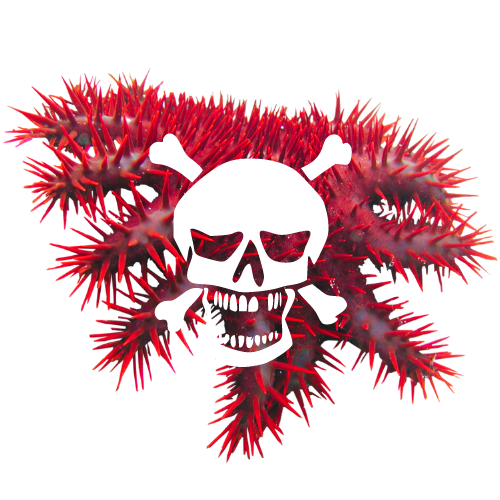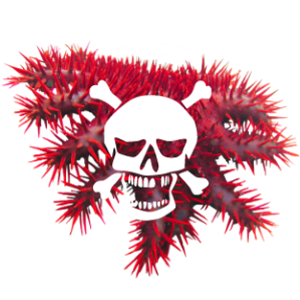"COTS... The 21 armed vampire like alien starfish, voracious devourer of entire coral reef systems. Sudanese Red Sea reefs enemy #1"
15th of July 2022 TheOceanRoamer during his daily reef research and monitoring activities for the Vault | Sudan project, was the first (and only, still to this day) who identified an massive COTS Outbreak of the coast of Port Sudan. While he reached out to local and international organizations for help, until today no comprehensive action has been undertaken to counter this ever growing threat. The local will and understanding is there, however the resources are simply not available.
NARRATIVE
Thanks to the Red Sea Transnational reef project, OCEANROAMERS crew who participated on a recent scientific expedition (5th of March 2023) were able to finally go out there after 7 months since we originally reported the COTS outbreak. The little research (limited to a few strategic reefs north and south of Port Sudan) yielded disastrous results. The outbreak has proportionally grown and expanded to even deep water reef structures like the Sanganeb Marine Park.
Kilometres of reefs around Port Sudan have already been decimated. The longer no definite action is undertaken, the longer it will take us to subdue this outbreak of massive proportions. If immediate action is not undertaken, the cost of the eradication program will also spike proportionately. The damage will also be of biblical proportions and it might take a decade or more for the reefs to regenerate.
THE COTS
Imagine that each part cut of from a COTS, regenerates and becomes a fully functional duplicate COTS!
The crown-of-thorns starfish receives its name from venomous thorn-like spines that cover its upper surface, resembling the biblical crown of thorns. It is one of the largest starfish in the world.
The body form of the crown-of-thorns starfish is fundamentally the same as that of a typical starfish, with a central disk and radiating arms. Its special traits, however, include being disc-shaped, multiple-armed, flexible, prehensile, heavily spined, and having a large ratio of stomach surface to body mass.
Adult crown-of-thorns starfish normally range in size from 25 to 35 cm (10 to 14 in). They have up to 21 arms. Although the body of the crown of thorns has a stiff appearance, it is able to bend and twist to fit around the contours of the corals on which it feeds. The underside of each arm has a series of closely fitting plates, which form a groove and extend in rows to the mouth.
Despite sustained research efforts by the scientific community since the early 70s, the causes and dynamics of these outbreaks are still poorly understood. Some researchers believe that one factor could be the increasing scarcity of acanthasters’ natural predators due to the overfishing of commercial species such as tritons, hump-head wrasses, emperors, etc. The overall deterioration in water quality, linked to human activities.
IMPLEMENTATION
THE BEST SOLUTION TODAY: ACIDIC INJECTIONS
A new approach based on the injection of natural and cheap acidic substances. Tests were carried out both in the lab under controlled conditions and in the field and demonstrated the lethal properties of some fruit juices (different varieties of lime and passion fruit), white vinegar and some powdered acids from the agri-food industry. These substances, which cause high mortality even at low doses and 100% mortality reached within 12–24h, are now a highly credible ecological alternative in fighting acanthaster outbreaks for all countries.
At this point we believe the following modus operandi to be the best, and most effective solution to be undertaken, to counter this massive threat to a reef system which is already under threat by global warming.
- Research: There is currently a lack in scientific data, to understand the extent of the outbreak
- A COTS eradication course needs to be organised for local fishermen, tourism operators
- A reward and data analysis system needs to be implemented.
- Local enforcement authorities need to be re-enabled to correctly police the unsustainable fishing and poaching practices which are probably the main causes of this outbreak.
Fuel, man power, tools need to be financed in order to implement the above, which will take anywhere from 3-5 months (with the current political situation in the country).
OCEANROAMERS with international organisations is taking the lead on this project.


